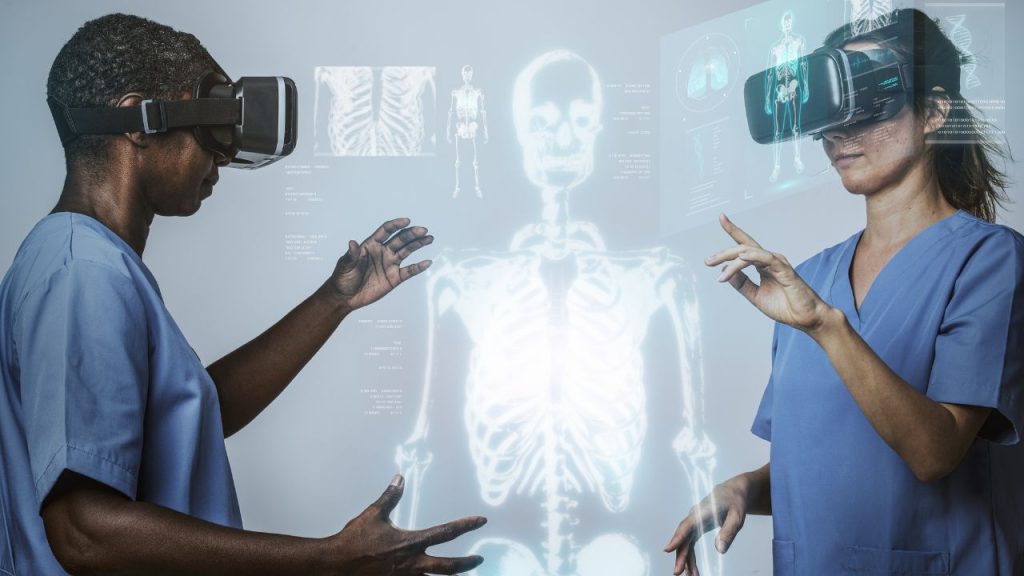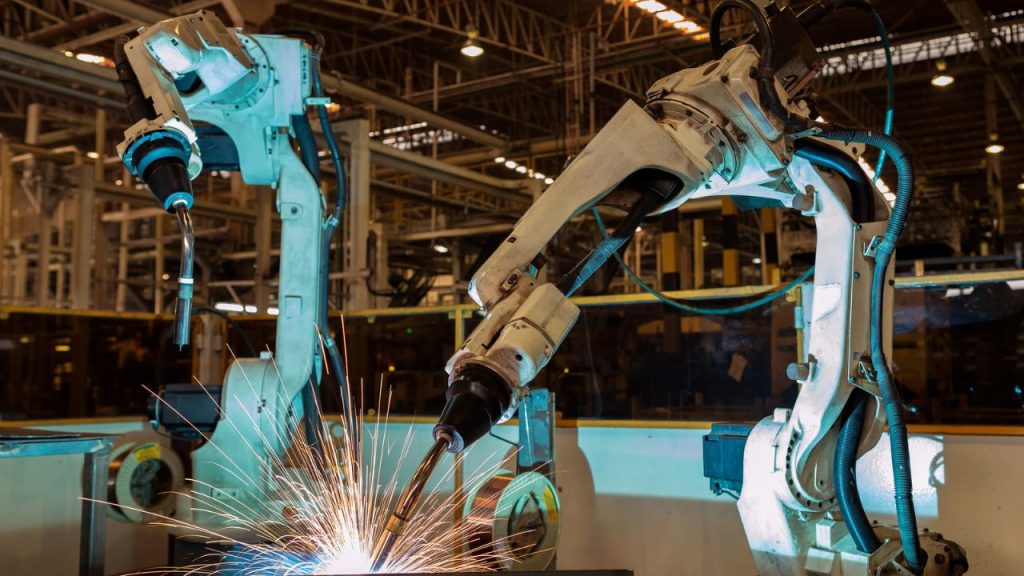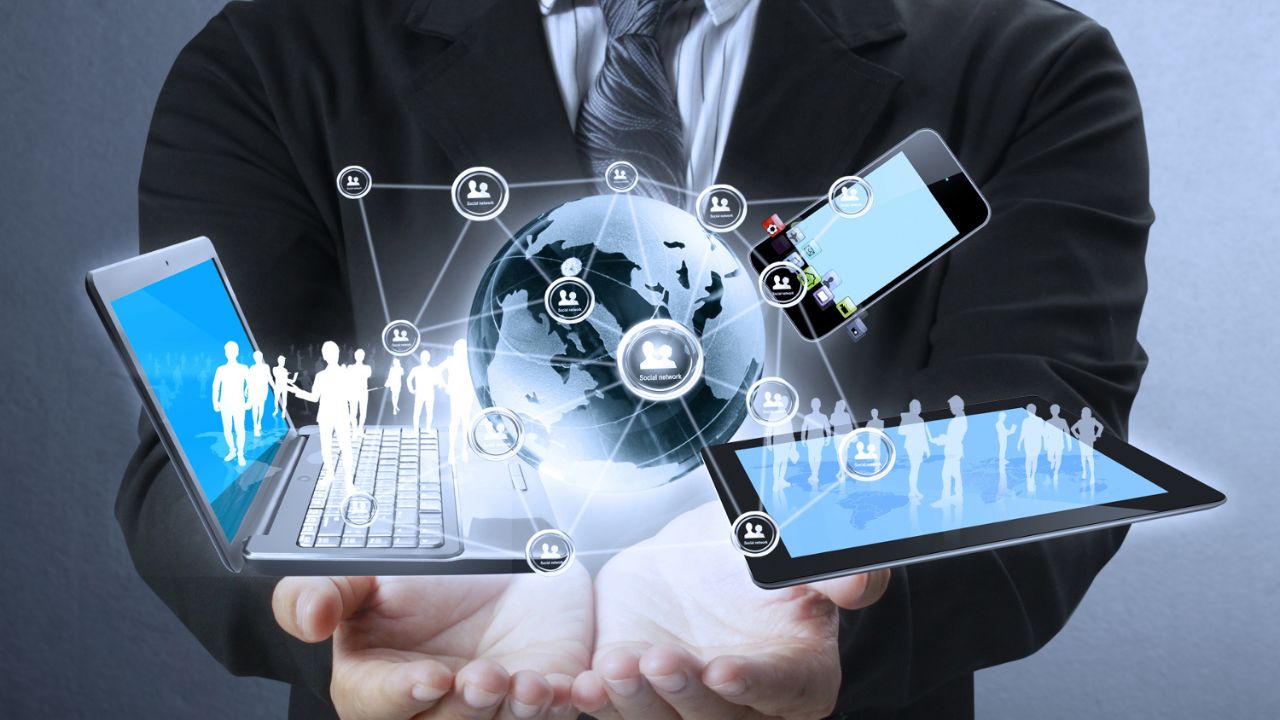The Positive and Negative Effects of Technology on Human Life
Technology has profoundly transformed every aspect of human life, reshaping the way we work, communicate, learn, and even entertain ourselves. From the advent of the wheel to the smartphone era, technological advancements have propelled societies forward, enhancing efficiency and connectivity. However, as technology integrates deeper into our daily lives, it also presents challenges that require careful consideration. This article explores the benefits and drawbacks of technology, offering a balanced view of its impact on our lives.
The Digital Revolution in Our Daily Lives
Remember when getting lost meant stopping at a gas station for directions? When waiting for a letter meant actual waiting? When photos took days to develop? Those memories feel almost quaint now. Our smartphones alone have replaced dozens of separate devices: cameras, maps, calendars, calculators, music players, and even our wallets. This convergence hasn’t just made life more convenient—it’s fundamentally altered how we interact with the world.
Take communication, for instance. We can video chat with family members across continents, collaborate with colleagues in different time zones, and maintain friendships through social media. A grandmother in Seoul can watch her grandchild’s first steps in San Francisco in real-time. A student in a rural village can access world-class education through online courses. These connections, unimaginable just a generation ago, have shrunk our world while expanding our horizons.
The Professional Transformation
The workplace has undergone perhaps the most dramatic transformation. Remote work, once an exception, has become mainstream. Cloud computing allows teams to collaborate seamlessly across borders. Artificial intelligence assists with everything from scheduling meetings to analyzing complex data sets. These tools haven’t just made us more productive—they’ve redefined what work means.
For many, the traditional 9-to-5 office schedule has given way to more flexible arrangements. Digital nomads can earn a living while traveling the world. Entrepreneurs can launch global businesses from their laptops. The democratization of technology has lowered barriers to entry across industries, enabling innovation and creating new opportunities for those previously excluded from traditional business structures.
Health and Wellness in the Digital Age
Technology has revolutionized healthcare in ways both obvious and subtle. Wearable devices track our steps, heart rates, and sleep patterns, making us more aware of our physical well-being. Telemedicine platforms connect patients with doctors remotely, improving access to healthcare, particularly in underserved areas. AI-powered diagnostic tools help detect diseases earlier and more accurately than ever before.
Mental health support has become more accessible through therapy apps and online counseling services. Meditation apps guide millions through daily mindfulness practices. Even our fitness routines have gone digital, with virtual personal trainers and connected exercise equipment bringing the gym experience home.

The Price of Progress
But this digital revolution comes with costs—some obvious, others more insidious. Screen time has become both a blessing and a curse. While our devices connect us to endless information and entertainment, they also fragment our attention and disrupt our sleep patterns. The average person now spends over seven hours daily on screens, often at the expense of face-to-face interactions and physical activity.
Digital addiction is a growing concern. The dopamine hits from social media likes, message notifications, and email alerts create powerful feedback loops that keep us tethered to our devices. Many people report feeling anxious when separated from their phones—a phenomenon known as nomophobia. The constant connectivity that makes remote work possible also blurs the lines between professional and personal life, making it harder to truly disconnect.
Privacy in the Digital Age
Our digital footprints have become valuable commodities. Every click, purchase, and search get logged, analyzed, and monetized. While this data powers personalized experiences and convenient services, it also raises serious privacy concerns. Companies know more about our habits, preferences, and behaviors than ever before, leading to targeted advertising that can feel eerily prescient.
Cybersecurity threats loom large. Data breaches expose personal information. Identity theft has become more sophisticated. Children growing up in this environment face unique challenges, as their entire lives are documented online before they can consent to or understand the implications. Click here
The Social Paradox
Perhaps the most profound impact of technology is on our social relationships. Social media platforms promise connection but often deliver isolation. We have hundreds or thousands of online friends but fewer deep, meaningful relationships. The carefully curated images we see online can trigger social comparison and feelings of inadequacy.
Young people particularly feel this tension. While they’re more connected than any previous generation, they also report higher rates of loneliness and anxiety. The fear of missing out (FOMO) drives compulsive checking of social media, while cyberbullying has moved playground dynamics into the digital realm, where hurtful comments can spread instantly and persist indefinitely.
Finding Balance in a Digital World
The solution isn’t to reject technology but to use it more mindfully. Many people are adopting digital wellness practices: setting screen time limits, creating tech-free zones in their homes, and practicing regular digital detoxes. Parents are learning to model healthy technology use for their children while schools incorporate digital literacy into their curricula.
Companies are responding to these concerns with features designed to promote more conscious technology use. Screen time tracking, focus modes, and wellness features are now standard on many devices. Some social media platforms are experimenting with hiding likes and other metrics that can drive addictive behavior.
The Path Forward
As we look to the future, the key challenge isn’t choosing between technology and tradition—it’s learning to harness technology’s benefits while mitigating its drawbacks. This means developing better habits around device use, setting healthy boundaries, and teaching future generations to be both tech-savvy and tech-wise.
We’re still in the early stages of the digital revolution. Emerging technologies like augmented reality, artificial intelligence, and the Internet of Things will continue to reshape our world in ways we can barely imagine. The question isn’t whether to embrace these changes but how to do so while preserving our well-being, privacy, and human connections.
Technology is neither inherently good nor bad—it’s a tool whose impact depends on how we use it. By approaching it thoughtfully and intentionally, we can work toward a future where technology enhances rather than diminishes our humanity. The goal isn’t to use more technology or less technology, but to use it better—in ways that truly serve our needs, values, and aspirations.
As we navigate this digital age, perhaps the most important skill we can develop is discernment: knowing when to embrace technology and when to step away, when to connect digitally and when to seek face-to-face interaction, when to let algorithms guide us and when to trust our human intuition. In finding this balance, we can create a future where technology serves as a bridge rather than a barrier to our most human experiences.

The Good Side of Technology: Enhancing Daily Life
1.Improved Communication and Connectivity
One of the most significant benefits of technology is its ability to connect people across vast distances instantly. Smartphones, video conferencing tools, and social media platforms have revolutionized how we communicate. Whether it’s a business meeting conducted over Zoom or a video call with family members living abroad, technology bridges the gap, making the world feel smaller.
2.Access to Information
The internet is a vast repository of knowledge, accessible to anyone with a device and connection. Search engines like Google, educational platforms such as Khan Academy, and online encyclopedias like Wikipedia empower individuals with information on virtually any topic. This democratization of knowledge supports education, professional development, and informed decision-making.
3.Healthcare Advancements
Technology has significantly improved healthcare services. Telemedicine allows patients to consult doctors remotely, while wearable devices like fitness trackers monitor health metrics in real-time. Breakthroughs in medical research, driven by sophisticated technology, have led to treatments for previously incurable diseases and the development of life-saving vaccines.
4.Convenience in Daily Tasks
Smart technologies streamline daily routines, making life more convenient. Smart home systems allow users to control lighting, heating, and appliances with voice commands or smartphone apps. Online shopping platforms bring goods and services to our doorstep, while ride-hailing apps like Uber simplify transportation.
5.Economic Growth and Job Creation
Technology drives innovation and economic growth, creating new industries and job opportunities. Fields like artificial intelligence (AI), cybersecurity, and software development have emerged as lucrative career paths. Additionally, technology enables remote work, providing flexibility for employees and access to a global talent pool for employers.
6.Environmental Monitoring and Sustainability
Technological tools play a crucial role in addressing environmental challenges. Renewable energy technologies such as solar panels and wind turbines help reduce dependence on fossil fuels. Meanwhile, smart agriculture techniques optimize water and fertilizer use, reducing waste and improving crop yields.
The Dark Side of Technology: Potential Drawbacks
1.Privacy and Security Concerns
As we share more of our lives online, concerns about data privacy and security have intensified. Cybercriminals exploit vulnerabilities in systems to steal sensitive information, leading to financial loss and identity theft. Social media platforms and tech companies often collect vast amounts of user data, raising questions about surveillance and misuse.
2.Social Isolation and Mental Health Issues
Paradoxically, while technology connects us, it can also contribute to social isolation. Excessive use of social media and digital devices can lead to reduced face-to-face interactions, weakening interpersonal relationships. Studies have linked heavy screen time with mental health issues, including anxiety, depression, and sleep disorders.
3.Overdependence and Reduced Critical Thinking
The convenience of technology can sometimes lead to overdependence. People often rely on GPS for navigation, calculators for basic math, and search engines for answers, which may diminish critical thinking and problem-solving skills over time.
4.Job Displacement
Automation and AI technologies have disrupted traditional industries, leading to job displacement in sectors like manufacturing, retail, and transportation. While new jobs are created, the transition can be challenging for workers who lack the skills required for emerging roles.
5.Environmental Impact
Despite its potential to promote sustainability, technology also contributes to environmental degradation. The production and disposal of electronic devices generate significant e-waste, while data centers consume vast amounts of energy. Mining for rare earth metals used in tech products harms ecosystems and depletes natural resources.
6.Ethical Dilemmas and Misinformation
Technological advancements often outpace the development of ethical guidelines, leading to dilemmas in areas like AI, genetic engineering, and surveillance. Furthermore, the internet facilitates the rapid spread of misinformation and fake news, influencing public opinion and undermining trust in institutions.
The Impact of Technology on Education
The rapid advancement of technology has reshaped various facets of society, and education is no exception. From digital classrooms to AI-powered learning tools, technology has transformed how knowledge is imparted and acquired. While it has introduced remarkable opportunities, it also poses unique challenges that require careful navigation.
Benefits of Technology in Education
Increased Accessibility
Technology has broken geographical barriers, making education accessible to a global audience. Online platforms such as Coursera, edX, and Khan Academy allow students to enroll in courses from top universities without the need to relocate. Furthermore, mobile learning apps ensure that even those in remote areas with limited resources can access quality educational content.
Personalized Learning
Tools like artificial intelligence (AI) enable personalized learning experiences. AI-driven platforms analyze a student’s strengths and weaknesses to create tailored lesson plans, quizzes, and feedback. This individualized approach helps students learn at their own pace, ensuring better retention and understanding of concepts.
Enhanced Engagement
Interactive tools such as virtual reality (VR) and gamified learning platforms have revolutionized student engagement. For example, VR can take students on immersive field trips to historical sites or scientific labs, making learning more dynamic and memorable. Gamification adds an element of fun, encouraging students to participate actively.
Efficiency for Educators
Teachers benefit from tools like automated grading systems, virtual classrooms, and collaborative platforms. These tools reduce administrative burdens and allow educators to focus more on teaching and mentoring.
Global Collaboration
Technology fosters cross-cultural interactions through virtual exchanges and collaborative projects. Students from different countries can work together on assignments, gaining diverse perspectives and preparing for a globalized workforce.

Challenges of Technology in Education
Digital Divide
While technology offers tremendous potential, the lack of access to digital tools creates a gap between privileged and underprivileged students. Many rural and economically disadvantaged communities lack the necessary infrastructure, such as reliable internet and devices, to benefit from these advancements.
Over-reliance on Technology
Excessive dependence on technology may hinder critical thinking and problem-solving skills. For instance, while calculators and spell-check tools are convenient, they can reduce a student’s ability to perform basic arithmetic or grammar checks independently.
Privacy and Security Concerns
The rise of digital tools in education brings concerns about data privacy. Students’ personal information and learning patterns are often collected, raising ethical questions about how this data is used and safeguarded.
Teacher Training and Adaptation
Not all educators are equipped to integrate technology effectively into their teaching methods. Comprehensive training and support are essential to ensure that teachers can utilize these tools to their full potential.
Screen Time and Health
Prolonged screen time associated with digital learning can lead to issues such as eye strain, reduced physical activity, and mental health challenges.
The Future of Technology in Education
Looking ahead, technology promises to further revolutionize education with advancements in AI, machine learning, and blockchain. For instance, blockchain could enable secure certification and credentialing, while AI may offer real-time language translation to support multilingual education.
However, the successful integration of technology requires a holistic approach. Policymakers, educators, and technologists must collaborate to bridge the digital divide, ensure equitable access, and promote ethical practices in the use of technology.
Balancing the Scales: Maximizing Benefits While Mitigating Drawbacks
To harness the benefits of technology while addressing its challenges, a multifaceted approach is essential.
- Promoting Digital Literacy
Educating people about the ethical use of technology, data privacy, and online security is crucial. Digital literacy programs can empower individuals to navigate the digital world responsibly and critically evaluate information.
- Encouraging Mindful Use
Setting boundaries for screen time and prioritizing face-to-face interactions can mitigate the social and psychological impacts of technology. Mindfulness practices, such as digital detoxes, help maintain a healthy balance between the online and offline worlds.
- Investing in Sustainable Technology
Developing eco-friendly technologies and improving recycling processes for e-waste can reduce the environmental impact of technology. Governments and corporations must collaborate to create incentives for sustainable practices.
- Fostering Ethical Innovation
Ethical considerations should guide technological development. This includes creating regulations to protect privacy, ensuring fairness in AI algorithms, and addressing the societal implications of emerging technologies.
- Supporting Workforce Adaptation
Policymakers and organizations should invest in reskilling and upskilling programs to prepare workers for the jobs of the future. Emphasizing lifelong learning can help individuals adapt to technological shifts.

The Future of Technology in Our Lives
The trajectory of technology suggests even greater integration into our daily lives. Innovations such as quantum computing, augmented reality, and biotechnology promise to transform industries and redefine human potential. However, with these advancements come heightened responsibilities.
Governments, corporations, and individuals must collaborate to ensure that technology serves humanity’s best interests. By addressing its drawbacks and prioritizing ethical, sustainable practices, we can shape a future where technology enhances well-being, equality, and progress. Click here

In conclusion, technology is a double-edged sword that has reshaped modern life in remarkable ways. Its benefits, from improved communication to healthcare advancements, are undeniable. However, the challenges it poses, including privacy concerns, social isolation, and environmental impact, cannot be ignored. By embracing a balanced approach, society can harness the power of technology for good while mitigating its negative effects.

